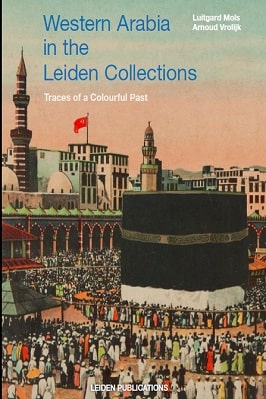
| Book Title | Western Arabia In The Leiden Collections |
| Book Author | Luitgard Mols Arnoud Vrolijk |
| Total Pages | 193 |
| Book Views | |
| Language | English |
| Book Download | PDF Direct Download Link |
| Get Hardcover | Click for Hard Similar Copy from Amazon |
Western Arabia in the Leiden Collections – Traces of a Colourful Past
Luitgard Mols Arnoud Vrolijk
WESTERN ARABIA IN THE LEIDEN COLLECTIONS – TRACES OF A COLOURFUL PAST
It is nothing short of a miracle that the provincial town of Leiden, the Netherlands, possesses two fascinating collections related to Western Arabia, also known as
the Hejaz. The region owes its fame first and foremost
to Mecca and Medina, the holiest cities of Islam. One collection, consisting mainly of historical objects of everyday use, clothing items, pilgrim souvenirs and other artefacts, is preserved in the Museum Volkenkunde (established in 1837); the other, containing Islamic manuscripts, photographs, letters, printed books and audiovisual materials, is kept in the library of Leiden University (founded in 1575).
Together, they provide a unique insight into a colourful and vibrant society that has all but vanished under the impact of changing political and religious allegiances and the onslaught of modernity.
The fact that these collections exist at all can only be explained in terms of the Dutch colonial presence in the Indonesian Archipelago prior to 1942. Under the legislation of the Netherlands East Indies freedom of religion was granted to Muslims, who then as now constituted the vast majority of the population.
This freedom included the right to go on Hajj, the pilgrimage to Mecca which
is incumbent on every Muslim who can aff ord to do so. Nonetheless, this right was granted only with the greatest reluctance, since the Dutch colonial administration feared that pilgrims would turn into ‘fanatical Muslims’ once they were exposed to co-religionists from other parts of the Islamic world not under European colonial domination, such as the Ottoman Empire.
These misgivings were only increased by the fact that the Holy Cities of Islam were impenetrable to non-Muslims. As a result, most political unrest in the Dutch colonies was attributed to pilgrims returning from Mecca.
It was only after the emergence of steam navigation in the Indian Ocean and the Red Sea in the second half of the nineteenth century, and the consequent rise
in the numbers of pilgrims, that the need arose for a more reliable infrastructure for the Indonesian Hajj. Authorities preferred that pilgrims be transported by Dutch – or at least European – shipping companies, and their movements were controlled by an elaborate system of visas and other travel documents.
In 1872 the Ottoman Empire, which included most of the Arab world, allowed the Dutch to establish a consulate in Jeddah, the main port of entry for sea passengers [Plate 1]. The fi first Dutch consul in Jeddah was Rudolph W.J.C. de Menthon Bake
To read more about the Western Arabia In The Leiden Collections book Click the download button below to get it for free
Report broken link
Support this Website
Click here to join our Telegram group for new Books